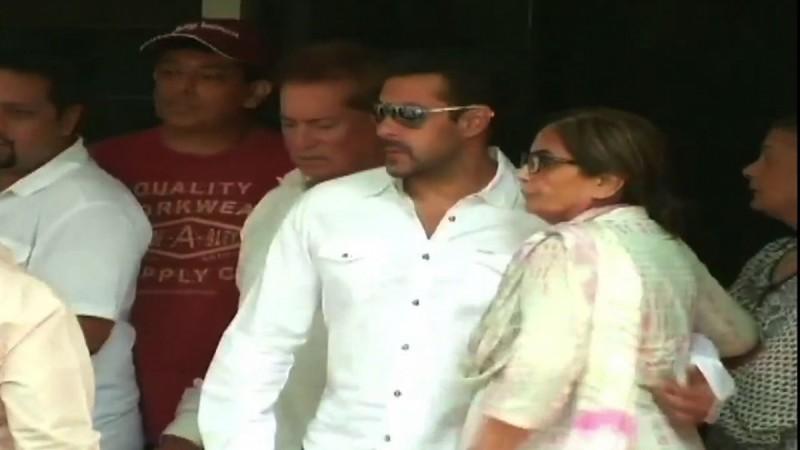
After 13 long years, Salman Khan was found guilty on Wednesday in 2002 hit-and-run case and sentenced to five years of rigorous imprisonment.
The Mumbai sessions court found him guilty of killing one and injuring four others under his SUV on the night of 28 September, 2002. The actor was, however, granted two-day interim bail by the Bombay High Court.
Here, we bring some points that went wrong in Salman Khan's case.
Drinking and driving without licence:
Salman was accused of driving the car without a licence when the mishap occurred. He was reportedly also under the influence of alcohol while driving that night.
Although the actor tried proving his innocence by stating that he was not driving the car nor had he consumed alcohol, records submitted by the Regional Transport Offices (RTO) and the Excise Department stated that he did not possess a driving licence or a liquor permit during the time of the incident. Medical tests also confirmed that the actor was drunk while driving.
Ravindra Patil's statement:
Salman's bodyguard Ravindra, who was with Salman in the vehicle at the time of the incident, had mentioned in his statement that there were only three people in the car. Ravindra, the key eye-witness who died in 2007, mentioned that Salman was at the driver's seat, while he sat next to him and singer Kamaal Khan was in the rear.
Driver Ashok Singh's late entry:
On 30 March, 2015, Salman Khan's driver Ashok appeared before the court for the first time after 13 years.
He told the court that he was driving the car when it crashed into the bakery on the ill-fated night. The driver, in his statement, narrated that it was he who was driving the car and not Salman.
His statement was contrary to what Salman's bodyguard Ravindra had said.
While Ravindra said there were three people in the car, driver Ashok's stating that he was driving the car meant there were a total of four people: Ashok (on driver's seat), Salman, Ravindra and Kamaal.
The driver's introduction in the later stage of the case in addition to his contrasting statement worked in favour of the prosecution. Public prosecutor Pradeep Gharat told DNA the same just before the verdict on Wednesday.
"The witness, being a common man, was unaware of the process of law. If the defence introduces a witness at any juncture in the case, then it is a fact that he has to come before court only after being instructed by the defence. This can go against the defence," said Gharat.
Further, when asked about the difference in the prosecution's and defence's theories, Gharat expressed his confidence over the verdict. He said: "According to our case, there were only three people in the car, but according to the defence, there were four. The question is the defence never objected the prosecution's case, that there were three people in the car, during the trial. Later, it came up with the theory of the driver driving the vehicle. Thus, the entire burden of proving the case, ie whether the driver was driving the vehicle, is now completely on the shoulders of the defence."
Lesser number of Witnesses:
While the prosecution had examined 27 witnesses, the defense examined only one witness, Ashok.
















